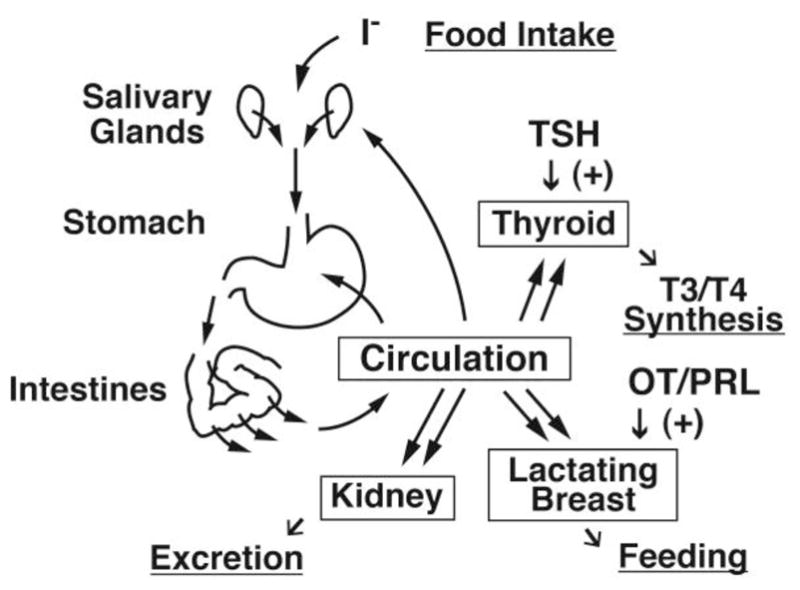Fig. 2.

A simplified model of the free iodide cycle in the human body. Most iodine is ingested as iodide (I−) or iodate (IO3−), which is rapidly reduced to iodide (Burgi et al., 2001). Iodide is absorbed by small intestine via the apical NIS, transferred into the circulation, and then taken up in the thyroid gland, as well as lactating breast, although ~90% of ingested iodide will be excreted by the kidneys. A fraction of circulating iodide is released again to the gastrointestinal tract through the salivary glands and stomach that express basolateral NIS. The sodium-dependent multivitamin transporter (SLC5A6) has also been proposed to mediate sodium-coupled iodide transport in the intestines (de Carvalho & Quick, 2011). OT, oxytocin; PRL, prolactin.
